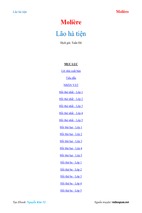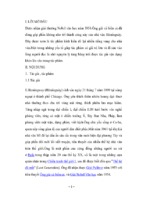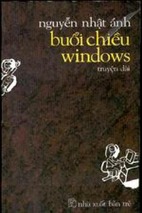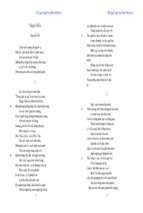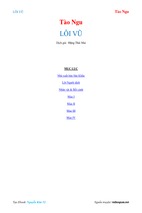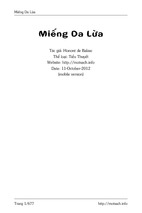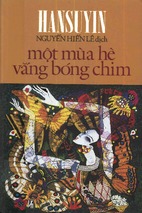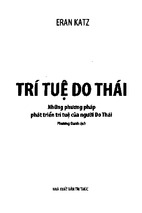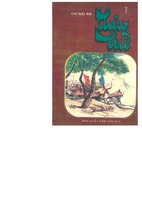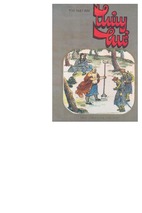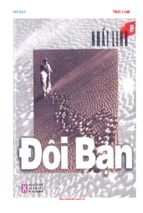PERSUASION
JANE AUSTEN
E D I T E D BY P A T R I C I A M E Y E R
A NORTON CRITICAL
SPACKS
EDITION
PERSUASION
The text of this Norton Critical Edition is that
of the first edition (dated 1818 but probably
issued in late 1817), which was published
posthumously. The editor has spelled out amper
sands and made superscript letters lowercase.
The novel, which is fully annotated, is followed by
the two canceled chapters that comprise Persuasion's
original ending.
"Backgrounds and Contexts" collects contemporary assess
ments of Jane Austen as well as materials relating to the social
issues of the day. Included is an excerpt from William Hayley's
1785 "Essay on Old Maids"; Austen's letters to Fanny Knight,
which reveal her skepticism about marriage as the key to happi
ness; Henry Austen's memorial tribute to his famous sister; as
sessments by nineteenth-century critics Julia Kavanagh and
Goldwin Smith, who saw Austen as an unassuming, sheltered,
"feminine," rural writer; and the perspective of Austen's biogra
pher, Géraldine Edith Mitten.
"Modern Critical Views" reflects a dramatic shift in the way
that scholars view both Austen and Persuasion. Increasingly, the
focus is on Austen's moral purposefulness and political acumen
and on Persuasions historical, social, and political implications.
A variety of perspectives are provided by A. Walton Litz, Marilyn
Butler, Tony Tanner, Robert Hopkins, Ann W. Astell, Claudia L.
Johnson, and Cheryl Ann Weissman.
A Selected Bibliography is included.
Each Norton Critical Edition includes an authoritative
text, contextual and source materials, and a wide range of interpretations—
from contemporary perspectives to the most current critical theory—as well
as a bibliography and, in many cases, a chronology of the author's life and
work.
ABOUT THE SERIES:
C O V E R I L L U S T R A T I O N : Thomas Hearne, "View of Bath from Spring Garden,"
Yale Center for British Art, Paul Mellon Collection.
A U T H O R ' S P O R T R A I T : Watercolor sketch of Jane Austen by Cassandra Austen.
Reproduced by courtesy of the National Portrait Gallery, London.
I S B N - 1 0 : 0-393-96018-8
90000 >
W.W.NORTON
NEW YORK
LONDON
\_
780393"960181
The Editor
PATRICIA MEYER SPACKS is Edgar F . Shannon Professor of
English at the University of Virginia. She is the author of
eleven books including An Argument of Images: The Poetry of
Alexander Pope, The Female Imagination, The Adolescent
Idea: Myths of Youth in the Adult Imagination, Desire and
Truth: Functions of Plot in Eighteenth-Century English Nov
els, and Boredom: The Literary History of a State of Mind.
Professor Spacks is a contributing editor of The Norton Anthol
ogy of World Masterpieces.
PERSUASION
AUTHORITATIVE TEXT
BACKGROUNDS AND CONTEXTS
CRITICISM
W. W. N O R T O N & C O M P A N Y , INC.
Also
Publishes
T H E NORTON ANTHOLOGY OF AFRICAN AMERICAN LITERATURE
edited by Henry Louis Gates Jr. and Nellie Y. McKay et al.
T H E NORTON ANTHOLOGY OF AMERICAN LITERATURE
edited by Nina Baym et al.
T H E NORTON ANTHOLOGY OF CHILDREN'S LITERATURE
edited by Jack Zipes et al.
T H E NORTON ANTHOLOGY OF CONTEMPORARY FICTION
edited by R.V. Cassill and Joyce Carol Oates
T H E NORTON ANTHOLOGY OF E N G L I S H LITERATURE
edited by M. H. Abrams and Stephen Greenblatt et al.
T H E NORTON ANTHOLOGY OF LITERATURE BY W O M E N
edited by Sandra M. Gilbert and Susan Gubar
T H E NORTON ANTHOLOGY OF MODERN AND CONTEMPORARY POETRY
edited by Jahan Ramazani, Richard Ellmann, and Robert O'Clair
T H E NORTON ANTHOLOGY OF POETRY
edited by Margaret Ferguson, Mary Jo Salter, and Jon Stallworthy
T H E NORTON ANTHOLOGY OF SHORT FICTION
edited by R.V. Cassill and Richard Bausch
T H E NORTON ANTHOLOGY OF THEORY AND CRITICISM
edited by Vincent B. Leitch et al.
T H E NORTON ANTHOLOGY OF WORLD LITERATURE
edited by Sarah Lawall et al.
T H E NORTON FACSIMILE OF THE FIRST FOLIO OF SHAKESPEARE
prepared by Charlton
Hinman
T H E NORTON INTRODUCTION TO LITERATURE
edited by Alison Booth, J. Paul Hunter, and Kelly J. Mays
T H E NORTON INTRODUCTION TO THE SHORT NOVEL
edited by Jerome Beaty
T H E NORTON READER
edited by Linda H. Peterson and John C. Brereton
T H E NORTON SAMPLER
edited by Thomas Cooley
T H E NORTON SHAKESPEARE, B A S E D ON THE OXFORD EDITION
edited by Stephen Greenblatt et al.
For a complete list of Norton Critical Editions, visit
www.wwnorton.com/college/english/nce_home.htm
A NORTON
CRITICAL
EDITION
Jane Àusten
PERSUASION
AUTHORITATIVE TEXT
BACKGROUNDS AND CONTEXTS
CRITICISM
Edited by
PATRICIA MEYER SPACKS
UNIVERSITY
OF
VIRGINIA
W. W. Norton & Company New York London
Copyright © 1 9 9 5 by W . W . Norton & C o m p a n y
All rights reserved
Printed in the United States o f America
First Edition
T h e text o f this book is c o m p o s e d in Electra
with the display set in Bernhard Modern
Composition by Vail Composition
Manufacturing by Maple-Vail
Book design by Antonina Krass
Library o f Congress Cataloging-in-Publication Data
Austen, Jane, 1 7 7 5 - 1 8 1 7 .
Persuasion : an authoritative text, backgrounds, and contexts,
reviews and essays in criticism / Jane Austen ; edited by Patricia
M e y e r Spacks.
p.
c m . — ( A Norton critical ed.)
Includes bibliographical references.
1. E n g l a n d — S o c i a l life and customs — 1 9 t h century—Fiction.
2. M a n - w o m a n relationships—England—Fiction.
1775-1817.
Persuasion.
3. Austen, Jane,
I. Spacks, Patricia Ann Meyer.
PR4034.P4
II. Title.
1994
823'.7-dc20
94-4510
ISBN 0-393-96018-8
W . W . Norton & C o m p a n y , I n c . , 5 0 0 Fifth Avenue, New York, N.Y. 1 0 1 1 0
W . W . Norton & C o m p a n y L t d . , Castle House, 7 5 / 7 6 Wells Street,
London W I T 3 Q T
567890
Contents
Preface
ix
The Text of Persuasion
1
[The Original Ending of Persuasion]
168
Backgrounds and Contexts
[William Hayley] • [On Old Maids]
181
Jane Austen • Letters about Persuasion
187
To Fanny Knight (March 1 3 , [ 1 8 1 7 ] )
187
To Fanny Knight (March 2 3 , [ 1 8 1 7 ] )
189
Henry Austen • Biographical Notice of the Author
191
[Richard Whateley] • [A New Style of Novel]
196
Anonymous • [Austen's Characters]
206
Julia Kavanagh • [The Language of Feeling]
208
Goldwin Smith • From Life of Jane Austen
211
Géraldine Edith Mitton • From Jane Austen and Her Times
212
Modern Critical Views
A. Walton Litz • New Landscapes
217
Marilyn Butler • [On Persuasion]
224
Tony Tanner • In Between: Persuasion 231
Robert Hopkins • Moral Luck and Judgment in Jane Austen's
Persuasion 265
Ann
W.
Astell
•
Anne
Elliot's
Education:
The
Learning
of
Romance in Persuasion 275
Claudia
L.
Johnson
•
Persuasion:
The
"Unfeudal
Tone
of the Present Day" 286
Cheryl
Ann
Weissman
•
Doubleness
and
Refrain
in Jane Austen's Persuasion 307
Jane Austen: A Chronology
313
Selected Bibliography
315
vii
Preface
Jane Austen wrote Persuasion, her last complete novel, while suffering
from the illness (Addison's disease) that would kill her. She began work
on it in 1815, finishing her alterations of the final chapters on July 18,
1816, precisely a year before she died. Her brother Frank published it,
along with Northanger Abbey and his own biographical notice of his
sister, at the end of 1817.
Certain critics (including some whose work is excerpted in the Back
grounds and Contexts and Criticism sections of this volume) have found
in the novel a melancholy strain, attributable, in their view, to the
author's illness. Early commentators on Persuasion—and some fairly
recent ones—glimpsed in the book the sadness of mortality, comment
ing on its elegiac tone and on a new kind of seriousness in its imagining.
Those with a literary-historical bent have noted the incursion of atti
tudes and assumptions that we associate with romanticism: the novelist
who once mocked Marianne's enthusiasm for dead leaves (Sense and
Sensibility) now allows her heroine, without overt criticism, to take
pleasure in evidence of the "declining year." Social critics have found
splendid material for investigation in the novel's new emphasis on the
life and values of the Royal Navy, discovering that Austen not only drew
on knowledge gained from two admiral-brothers but appeared to criti
cize the aristocracy and welcome the accession to social power of a new
class. Persuasion, in short, contains something for everybody, a fertile
field for varied sorts of critical investigation.
The documents collected in the Backgrounds and Contexts and Criti
cism sections of this volume suggest a range of possibilities and adum
brate changing attitudes and trends in critical discourse. T h e excerpt
from William Hayley's Essay on Old Maids (1785), for instance, implic
itly sketches the social context in which Austen chose to investigate the
emotional situation of a twenty-seven-year-old unmarried woman. For
Austen, at least in her role as fiction maker, as for Hayley, marriage
constituted the happy ending of a woman's youth. Within this concep
tual framework, however, Austen found it possible to imagine a woman
neither preoccupied with marriage nor initially convinced that no
female fulfillment can exist outside it. Her letters to Fanny Knight
remind us of Jane Austen's comic skepticism about marriage as consti
tuting inevitable female bliss; Persuasion helps elucidate that skepticism.
ix
X
PREFACE
In his memorial notice her brother describes Jane Austen as a woman
of notable piety and familial devotion. That woman's last completed
novel reminds us how rich an emotional life may underlie exemplary
female conduct. One of Austen's communications to Fanny Knight
describes Anne Elliot, the heroine of Persuasion, as "almost too good
for me." Henry Austen's characterization of his sister makes goodness
sound like a simple matter. Persuasion tells us otherwise. Goodness can
include resistance as well as persuadability—and it by no means pre
cludes private judgment.
If such commentators on the social scene as Hayley and such observ
ers of character as Henry Austen call attention to components of con
ventional female compliance in the late eighteenth and early nineteenth
centuries, nineteenth- and early twentieth-century commentary on Per
suasion tends to stress other stereotypically feminine elements of the
novel, notably its alleged emphasis on feeling and its concern for the
everyday. Such commentary supports a view of Austen that has long
survived; as an unmarried woman living in a village, she knew and cared
little about problems and experience beyond her immediate setting.
Limited in imaginative range, according to this view, Austen evinced
sharp observation, acumen about a fairly restricted realm of emotions,
and a gift for sharp, often comic, characterization. Twentieth-century
criticism, however, heavily represented in the present volume, considers
the Austen of Persuasion a serious moralist and a significant commenta
tor on social, even political, issues.
My decision to emphasize recent criticism of Persuasion reflects my
conviction that the current critical shift has enormous importance for
our comprehension of Austen's achievement. New ways of approaching
the novels make it possible for the first time to think complexly about
Austen in the context of her contemporaries—not only her literary
peers, but all the other men and women living through the Napoleonic
Wars on the Continent and their political repercussions in England.
Persuasion speaks of more than life in a village, or even in Bath. It
sharply ironizes Austen's well-known profession to her brother about
"the little bit (two Inches wide) of Ivory on which I work with so fine a
Brush, as produces little effect after much labour." Devoted readers have
always denied the claim that Austen works to "little effect"; the notion
of her two inches of ivory is equally questionable.
"Pictures of perfection . . . make me sick and wicked," Austen
observed, in the letter containing her claim that Anne Elliot was "almost
too good" for her. Good though she is, the heroine of Persuasion never
runs the danger of "perfection." She plays music so that others may
dance, cares for a sick child so that her sister and brother-in-law can go
out to dinner, changes residence in response to the real or fancied needs
of her relatives. Behaving like the very model of a well-bred spinster,
she nonetheless vibrates with passion and preserves a will of her own.
PREFACE
XI
The early commentators who praised Austen's characterization and
noted the high degree of feeling in Persuasion had it right. Thus Julia
Kavanagh, in 1862, observes that the portrayal of Anne constitutes "the
first genuine picture of that silent torture of an unloved woman." Just
so: Austen makes her readers experience vicariously the full intensity of
such torture.
But those interested in the social and political implications of Austen's
fiction get it right too. T h e special brilliance of Persuasion depends
partly on its combined focus on the private experience of a sharply imag
ined individual and the social actualities that necessarily inform individ
ual experience. As in her other fiction, Austen here provides a
penetrating study of self-love in its varied manifestations. T h e Elliot
family supplies numerous examples, from the comic to the simply
appalling. Anne's sister Mary, her state of health varying according to
the degree of attention others pay her, has found an appropriate mate in
Charles, concerned mainly with his hunting, his dogs, and his guns.
Elizabeth, the other Elliot sister, resembles her father in vanity and in
self-referential snobbery. Sir Walter, for whom his own appearance and
rank constitute the primary standard of value against which he judges
others (usually to their disadvantage), cares not at all for the welfare of
his daughter Anne, whom he considers plain and unlikely to marry well.
He and Elizabeth decide, as an economy measure, to bring Anne no
gift from their visit to London. T h e tiny episode epitomizes their utter
self-absorption, which signifies a widespread and dangerous social
malady.
Less dramatic but more sinister in his self-preoccupation is William
Elliot, who calculates his every move in relation to selfish interest. Anne
condemns him for lack of "openness" well before she learns of his more
openly destructive behavior. He acts like a man of the world—if one
defines the world as a place where everyone is out for him- or herself
and where success entails winning place, power, and wealth at the
expense of others. Persuasion raises the question of whether any alterna
tive conception of the world can prove viable.
It does not treat this question as a simple one. As Alexander Pope had
recognized ("Self-love, the spring of motion, acts the soul; / Reason's
comparing balance rules the whole"), self-interest energizes everyone
and provides a fundamental engine of social progress. Anne, to whom
her family denies the right of openly expressed self-concern, experiences
the omnipresence of individually focused perspectives as she moves from
one small social environment to another, to find that the concerns of
one household mean nothing at all to residents of another only a few
miles away. Driving down a Bath street with Lady Russell, Anne sees
only the presence of the man she loves on the sidewalk. What will Lady
Russell say about him? she wonders. Lady Russell, of course preoccu
pied with her own affairs, comments instead on the window curtains
Xll
PREFACE
she has been contemplating. Anne appropriately recognizes the irony of
conflicting personal assignments of significance, but the recognition
does not protect her—even her—from seeing in the light of her own
feelings, thoughts, and obsessions.
Yet Persuasion suggests the possibility of surmounting narrow selfconcern, not only through the self-sacrificing "goodness" that Anne at
first appears to embody but through a kind of "openness" antithetical to
William Elliot's calculation and promising new social horizons. Pope
went on from his observation of self-love as energizing principle to the
Utopian hope that self-love and social might ultimately merge. Austen
adumbrates less Utopian versions of that merging in the members of the
navy she depicts, Admiral and Mrs. Croft, Captain Wentworth, and
Anne herself, who becomes Mrs. Wentworth. The Crofts and Captain
Wentworth exhibit healthy self-concern. Admiral Croft does not feel
shy about drawing his own conclusions as to the character of Sir Walter
Elliot; Mrs. Croft speaks her judgments and attitudes forthrightly. Cap
tain Wentworth, in worldly terms successful, has indeed gained his
wealth at others' expense, triumphing in naval combat, capturing ships,
winning promotion presumably over other people's heads. T o some
extent, then, the world operates as William Elliot assumes, by clamber
ing competition. Yet these people who have won status and money have
not had to sacrifice personal feeling. The Crofts exemplify cooperative
and satisfying marriage. Wentworth, despite his hurt feelings over
Anne's earlier rejection and his determination to marry anyone but her,
finally faces the truth of his emotions and risks rejection once more for
the sake of his newly discovered, long-enduring devotion. If we take
Anne and her lover as exemplary, it is not quite accurate to generalize,
as Anne does, that women love longest when all hope is gone. Men can
love just as long—they just have more trouble acknowledging the fact
about themselves.
One need not conclude that the navy will replace the aristocracy as
center of social power. But the navy epitomizes a better moral as well as
social order, specifically in the way its representatives embody a produc
tive union between self-directed and outward-directed interest. Anne,
marrying Wentworth, can abandon self-sacrifice for self-fulfillment—
which is not to say that she at all abandons her concern for others. The
novel's final sentences direct the reader's attention both to the life of
personal feeling and to the navy's symbolic connection with private as
well as public virtue. "Anne was tenderness itself, and she had the full
worth of it in Captain Wentworth's affection. . . . She gloried in being
a sailor's wife, but she must pay the tax of quick alarm for belonging to
that profession which is, if possible, more distinguished in its domestic
virtues than in its national importance. " T h e language of finance ("the
full worth of it," "pay the tax") applied to emotions calls attention to the
processes of exchange involved in virtually every human transaction.
PREFACE
xiii
Ideally one achieves balance between what is given and what received;
one does not, like William Elliot, aspire only to take. Being a sailor, or
a sailor's wife, allows for intricate balances, between loving and being
loved, between pride and fear, but also between personal absorption
and public responsibility. T h e private satisfaction Wentworth receives
corresponds to the national service he gives; Anne pays for her pride in
his public role by fear for the possibility of her private deprivation. At
any moment such precarious balances can tip, but the novel concludes
with the imagining of their preservation and of their moral resonance.
Such preservation, such resonance signify for national life as well as for
a couple's marriage.
The text of Persuasion here printed is that of the first edition, dated
1818 but probably issued in late 1817. T h e printing of the two canceled
chapters follows the edition of R. W . Chapman. Ampersands that
appeared in the original texts have been spelled out, and superscript
letters have been lowered.
The Text of
PERSUASION
Persuasion
Chapter I
Sir Walter Elliot, of Kellynch-hall, in Somersetshire, was a man
who, for his own amusement, never took up any book but the Baronetage; there he found occupation for an idle hour, and consolation in a
distressed one; there his faculties were roused into admiration and
respect, by contemplating the limited remnant of the earliest patents;
there any unwelcome sensations, arising from domestic affairs, changed
naturally into pity and contempt. As he turned over the almost endless
creations of the last century—and there, if every other leaf were powerless, he could read his own history with an interest which never failed—
this was the page at which the favourite volume always opened:
1
2
3
E L L I O T O F KELLYNCH-HALL.
Walter Elliot, born March 1, 1760, married, July 15, 1784,
Elizabeth, daughter of James Stevenson, Esq. of South Park, in the
county of Gloucester; by which lady (who died 1800) he has issue
Elizabeth, born June 1, 1785; Anne, born August 9, 1787; a stillborn son, Nov. 5, 1789; Mary, born Nov. 20, 1791.
Precisely such had the paragraph originally stood from the printer's
hands; but Sir Walter had improved it by adding, for the information of
himself and his family, these words, after the date of Mary's birth—
"married, Dec. 16, 1810, Charles, son and heir of Charles Musgrove,
Esq. of Uppercross, in the county of Somerset,"—and by inserting most
accurately the day of the month on which he had lost his wife.
Then followed the history and rise of the ancient and respectable family, in the usual terms: how it had been first settled in Cheshire; how
mentioned in Dugdale— serving the office of High Sheriff, representing a borough in three successive parliaments, exertions of loyalty, and
dignity of baronet, in the first year of Charles II., with all the Marys and
4
1.
2.
3.
4.
Presumably!. Debrett's Baronetage of England (1808).
Titles (of nobility).
New peerages.
Sir William Dugdale, The Ancient Usage in Bearing of Such Ensigns of Honour as Are Commonly Caïïd Arms, with a Catalogue of the Present Nobility of England . . . Scotland . . .
and Ireland (mi).
3
4
CHAPTER I
Elizabeths they had married; forming altogether two handsome duodec
imo pages, and concluding with the arms and motto: "Principal seat,
Kellynch hall, in the county of Somerset," and Sir Walter's hand-writ
ing again in this finale:
"Heir presumptive, William Walter Elliot, Esq., great grandson of
the second Sir Walter."
Vanity was the beginning and the end of Sir Walter Elliot's character;
vanity of person and of situation. He had been remarkably handsome in
his youth; and, at fifty-four, was still a very fine man. Few women could
think more of their personal appearance than he did; nor could the valet
of any new made lord be more delighted with the place he held in
society. He considered the blessing of beauty as inferior only to the bless
ing of a baronetcy; and the Sir Walter Elliot, who united these gifts, was
the constant object of his warmest respect and devotion.
His good looks and his rank had one fair claim on his attachment;
since to them he must have owed a wife of very superior character to
any thing deserved by his own. Lady Elliot had been an excellent
woman, sensible and amiable; whose judgment and conduct, if they
might be pardoned the youthful infatuation which made her Lady
Elliot, had never required indulgence afterwards.—She had humoured,
or softened, or concealed his failings, and promoted his real respectabil
ity for seventeen years; and though not the very happiest being in the
world herself, had found enough in her duties, her friends, and her
children, to attach her to life, and make it no matter of indifference to
her when she was called on to quit them.—Three girls, the two eldest
sixteen and fourteen, was an awful legacy for a mother to bequeath; an
awful charge rather, to confide to the authority and guidance of a con
ceited, silly father. She had, however, one very intimate friend, a sensi
ble, deserving woman, who had been brought, by strong attachment to
herself, to settle close by her, in the village of Kellynch; and on her
kindness and advice, Lady Elliot mainly relied for the best help and
maintenance of the good principles and instruction which she had been
anxiously giving her daughters.
This friend, and Sir Walter, did not marry, whatever might have been
anticipated on that head by their acquaintance.—Thirteen years had
passed away since Lady Elliot's death, and they were still near
neighbours and intimate friends; and one remained a widower, the other
a widow.
That Lady Russell, of steady age and character, and extremely well
provided for, should have no thought of a second marriage, needs no
apology to the public, which is rather apt to be unreasonably discon
tented when a woman does marry again, than when she does not; but
Sir Walter's continuing in singleness requires explanation.—Be it
known then, that Sir Walter, like a good father, (having met with one
or two private disappointments in very unreasonable applications) prided
- Xem thêm -

